My guess is that no two trips to Galápagos (the archipelago of volcanic islands that is part of the Republic of Ecuador) are the same. There are multiple ways to experience the islands (on foot or by liveaboard). Each option comes with its own unique benefits, but trade-offs as well. Some of the islands (and dive sites) are accessible only by cruise ship or liveaboard. Since I was on foot, had a finite amount of time to work with and also spent time exploring mainland Ecuador, I was constrained to four islands (Baltra, Santa Cruz, Isabela and San Cristobal). Someday, I will return to visit by diving liveaboard, but this trip was perfect in itself – a balance of land and water exploration, adventure, history and culture.
Getting to Galápagos will likely have you boarding a plane either from Quito or Guayaquil in mainland Ecuador. There, you will pay a national park fee (~$100 USD) and go through an inspection for certain restricted items (definitely no organic fruits or plants allowed). From this point forward, expect similar inspections at every entrance/departure point including ferries to other islands. Also, unless you are traveling by cruise ship, expect to hear and speak mostly Spanish from this point on as well. Once you leave the mainland and airport centers, far fewer English speakers exist, with the exception of island visitors. There are a number of European and US travelers on the islands, but most of the locals speak Spanish only so you will want to be prepared in order to communicate with them in their primary language. Like most travelers to Galápagos, I am sure I could go on forever about this amazing destination, but highlights are probably easier to consume.
Baltra
Most mainland flights land here. It is pretty exciting knowing that you are finally in Galápagos, but also a good lesson in patience because it does still take a while to get to town (hint: bring snacks!). Baltra is more of a pass-through destination. Upon retrieving luggage, a free bus will transport you either to the cruise ship port or Itabaca Canal (different directions). Those on foot will arrive at the canal and take the water taxi to Santa Cruz island (just a couple of minutes across the waterway). Generally speaking, water taxis throughout the islands charge a nominal fee so be sure you have coins or small bills throughout your trip.
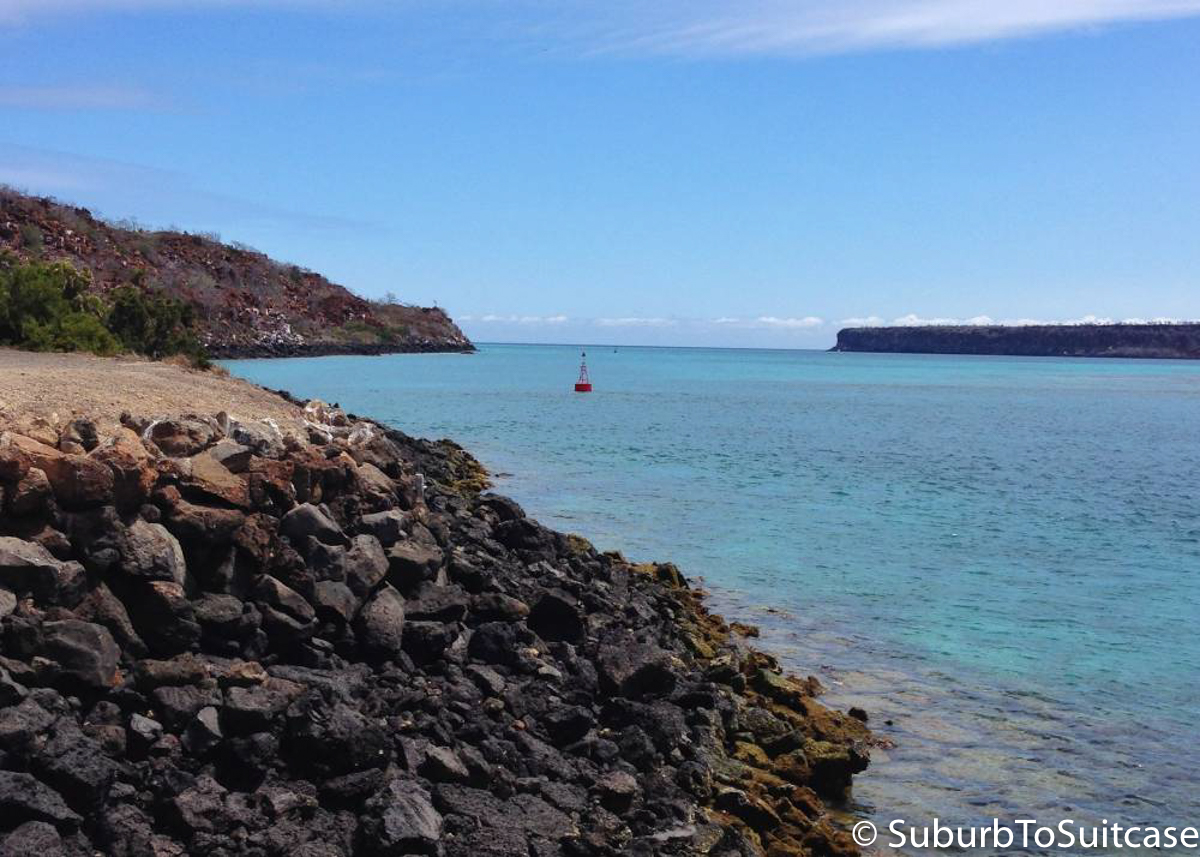
Itabaca Canal between Baltra island (left) and Santa Cruz island (right)
On the return trip, Baltra airport is actually a great place to pick up last-minute souvenirs. They have a great little “market” of stores in the airport and the prices are very reasonable. There are also a couple of places that serve packaged snacks as well as hot meals.
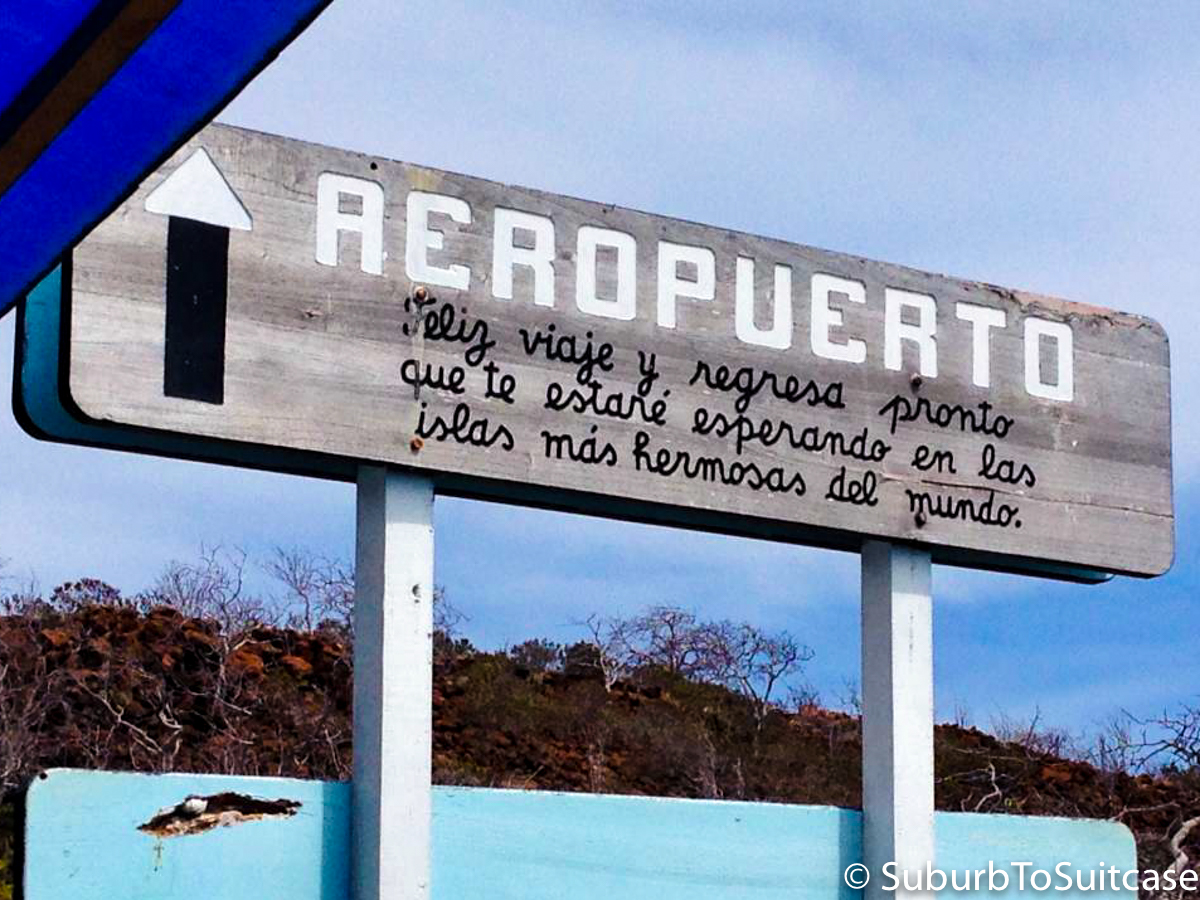
“Happy journey and return soon – I will be waiting in the most beautiful Islands of the world.”
Santa Cruz
Upon reaching Santa Cruz, I took another bus for about 40 minutes to Puerto Ayora (again nominal charge). This is the main area for food, accommodations and transport. The town is safe and very walkable but taxis are also inexpensive (usually $1-$2 USD). There are a variety of little stores and markets as well as some nice reasonably priced restaurants. There are plenty of tourist-focused restaurants, but the local food is delicious. About two blocks inland from the water along the main street, there is a local food area, where at night lots of people congregate. There are some fun bars in those two blocks also – just ask around. For food, I would highly recommend arroz con pollo (chicken with rice) since it is great everywhere. Order bottled water on all islands because it is purified. The fish market in town is fun to watch. It, of course, smells like fish, but it is entertaining to watch the huge pelicans up close.
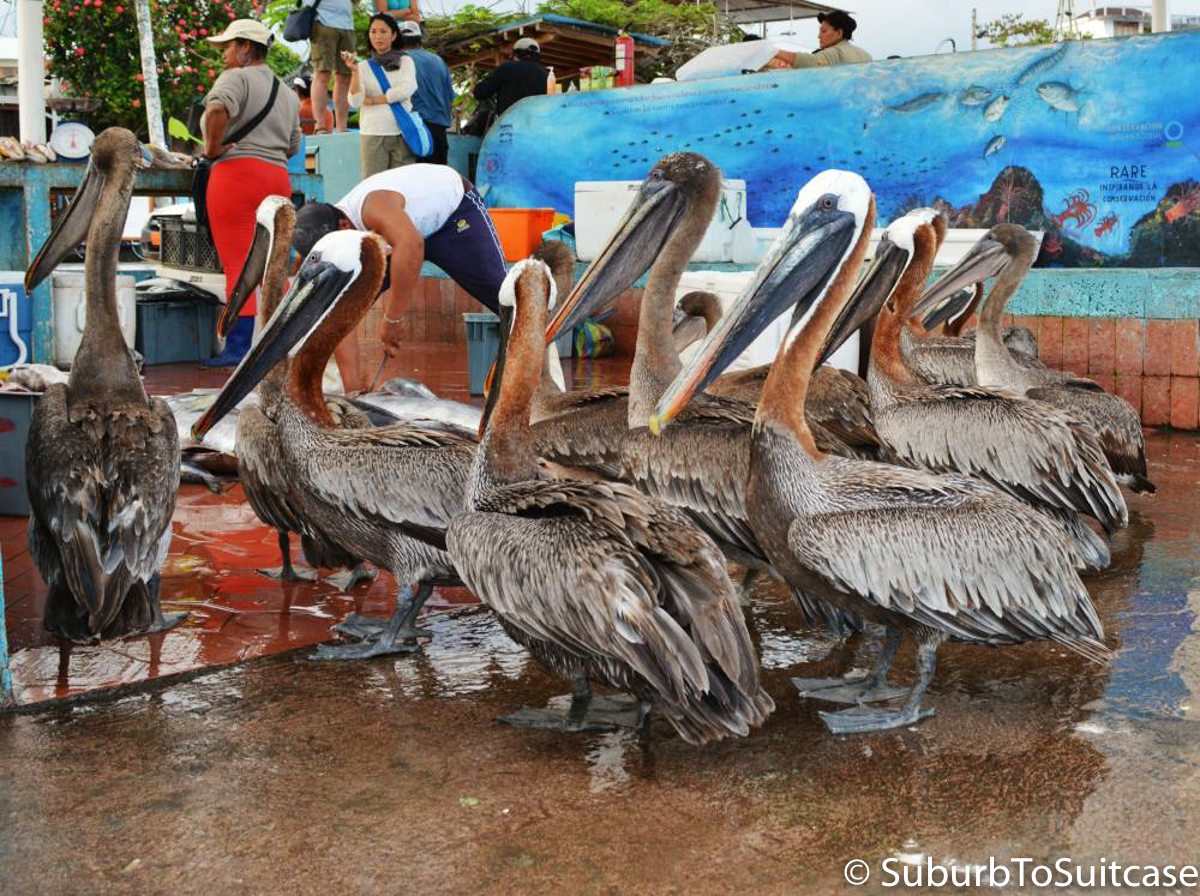
Patient Pelicans at the Fish Market Awaiting Snacks
Dive shops are mostly along the main road and within a block inland from the water – there are a handful of choices but most have a set schedule for which dive sites they do on certain days unless there are weather constraints. The prices to dive in Galápagos are high (worse if you pre-reserve), but this is the price you pay (literally) to dive here when not using a liveaboard. Many dive sites have strong currents here – Gordon Rocks is beautiful but one of the most advanced because of the abrupt directional shifts in current and currents that often pull in opposite directions at the same time. The ocean can be very rough at, and just below, the surface so descent and equalization can be more challenging. Water in the Galápagos is surprisingly low visibility in areas too, so set your expectations accordingly if you are planning to use a camera. Day trip dive boats are not suited for big camera rigs either – the water is more salty than other places (you will wear more weight) and there are no fresh water bins to dip any equipment.
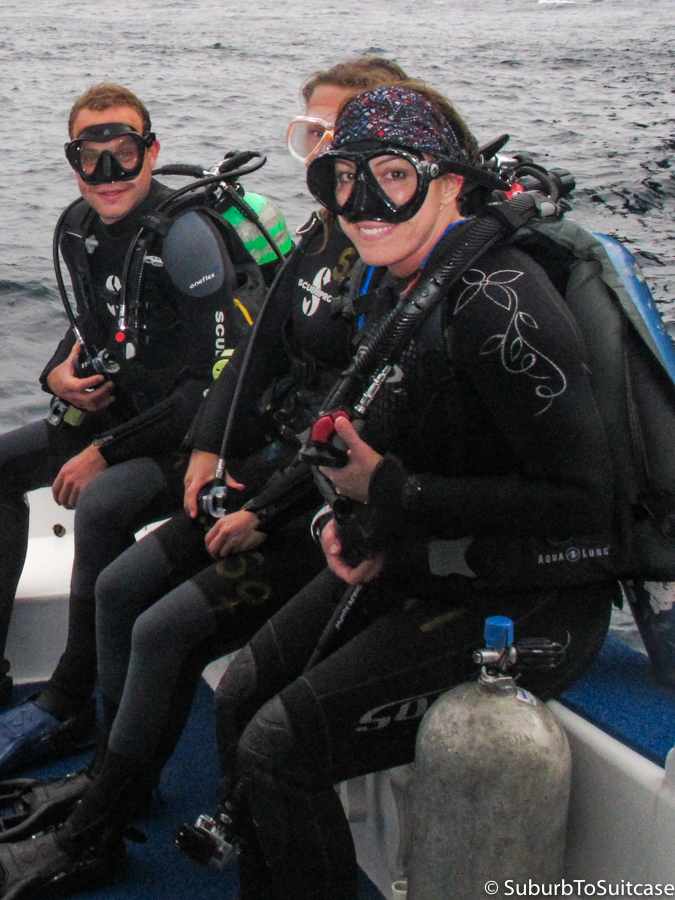
Me at Gordon Rocks
Some land areas to see here include the Darwin Research Station, highland tour (about $35 for a taxi driver to take you and wait while you walk through and also see the turtles in the wild), Tortuga Bay (long hike to the actual beach and bay but great exercise and definitely worth it so just pack water – about $15 USD to rent a kayak once you’re there to see the sea turtles and white tip reef sharks in their natural habitat) and Laguna de las Ninfas (free but you will sign in with a park member then walk around the mangrove lagoon on your own – it’s a secluded short stroll and the platforms are perfect for quiet early morning yoga practice).
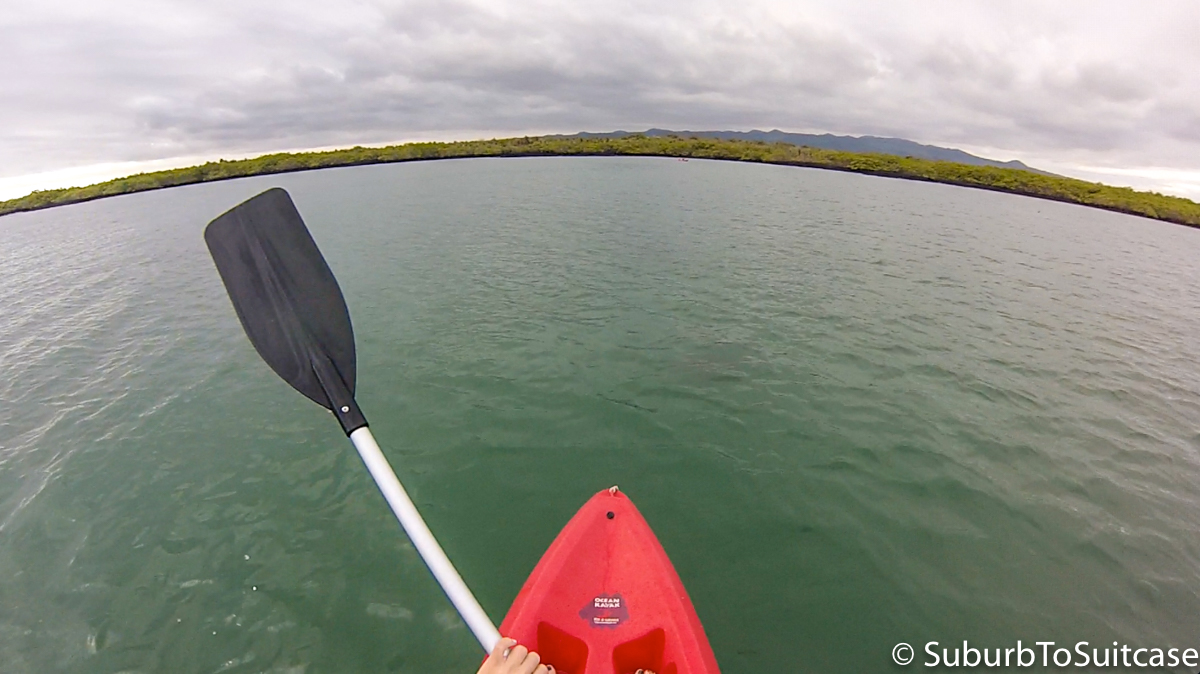
Me, exploring Tortuga Bay on Santa Cruz island by kayak, just before sunset
This is also where you buy ferry tickets to other islands. One-way tickets range from $25-$30 USD so negotiate a round-trip price to save money (our favorite was Cabo Mar). The ferries are actually speed boats – they have limited seats available and few departures each day so it is important to buy tickets the day before to secure your reservation. Also do not arrive at the last minute because there will be a line to go through the security checks and if you miss your ferry, you will likely wait another day. To get to the actual ferry, you will go from the pier in a small water taxi (again, nominal fee). The ferry rides (2-2.5 hours) can be bumpy, so if you have any motion sensitivity, consider a seasickness patch. Everyone is provided a life jacket to wear.

Nap time for this sea lion – you can see his identification tag in this photo.
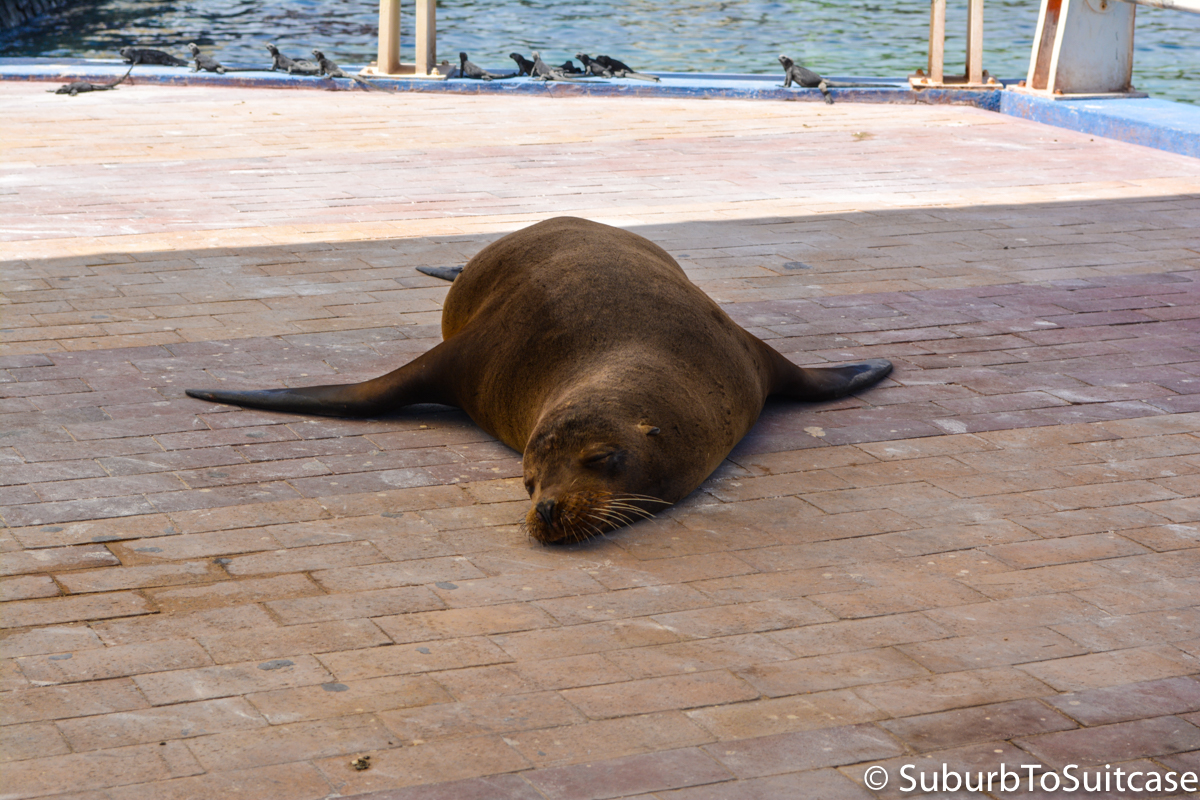
Sleepy Sea Lion napping with marine iguanas on Puerto Ayora pier on Santa Cruz island
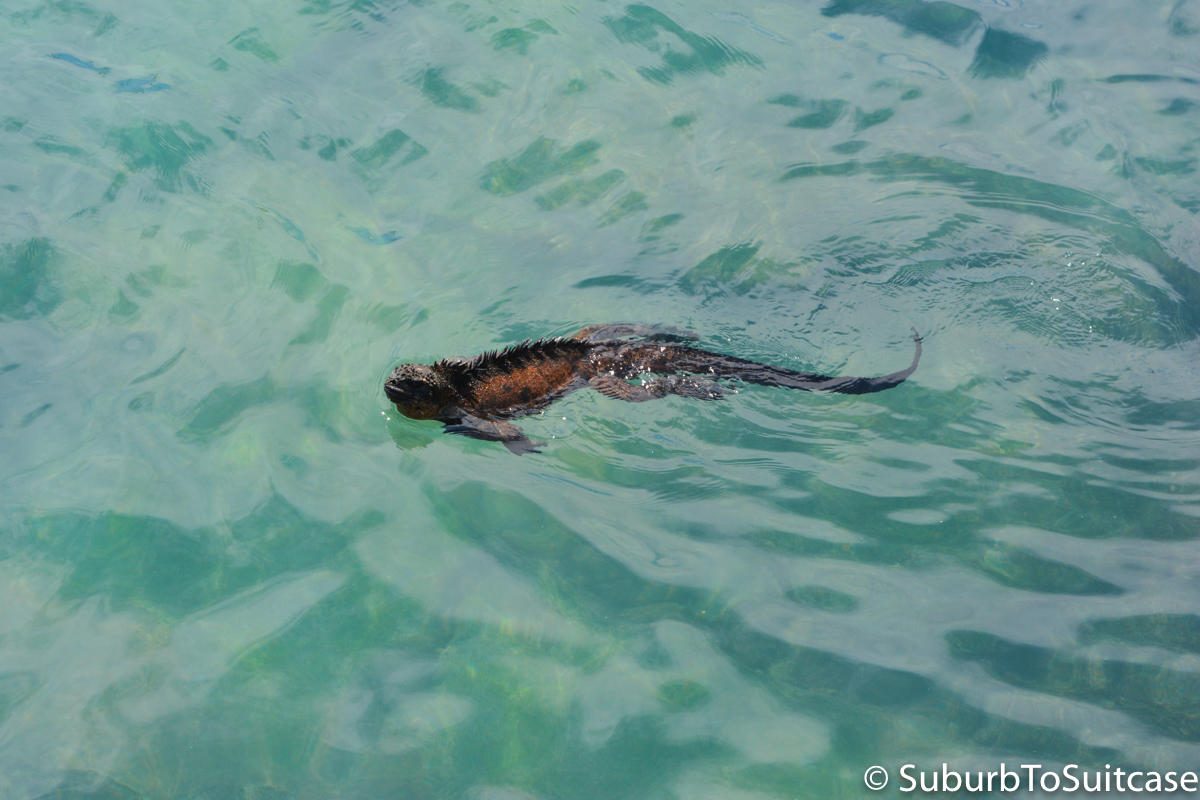
Swimming marine iguana off Puerto Ayora pier on Santa Cruz island
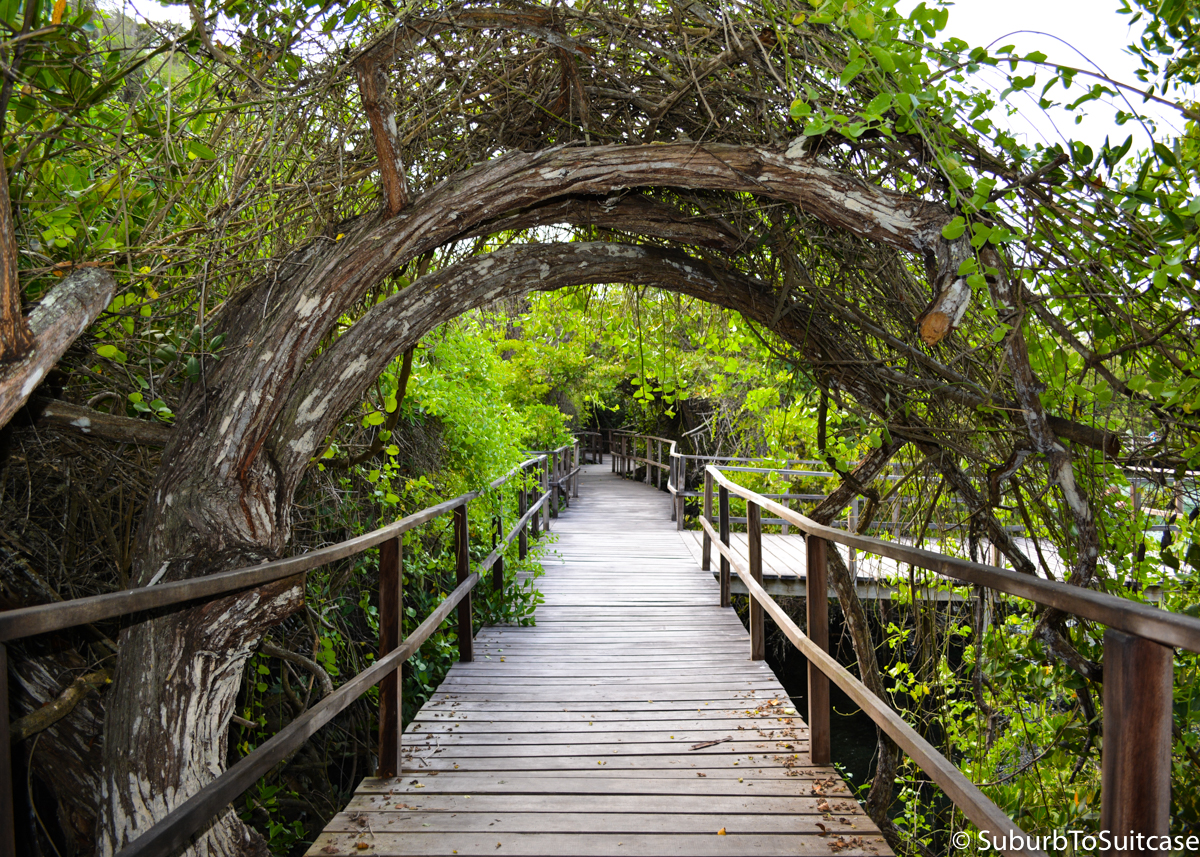
There are some beautiful walking paths through the mangroves on Santa Cruz Island.
Isabela
The ferries drop you off in Puerto Villamil and for ~$2 USD, you can take a taxi to the main center of town. It is important to note that during siesta, this island is like a ghost town. Get whatever food or supplies you need in the morning and evening because from about 11am – 4pm, this island is deserted.
The marine iguanas and crabs are everywhere on Isabela, primarily perched on the lava rocks. The piers are also full of inquisitive sea lions. This is the island to see the penguins too – there aren’t many, but as the ferry is pulling into the bay, look for Las Tintoreras because you will see a couple standing on the rocks or near the shore. They are tiny but playful. It is also sometimes possible to see them in the water off the pier.
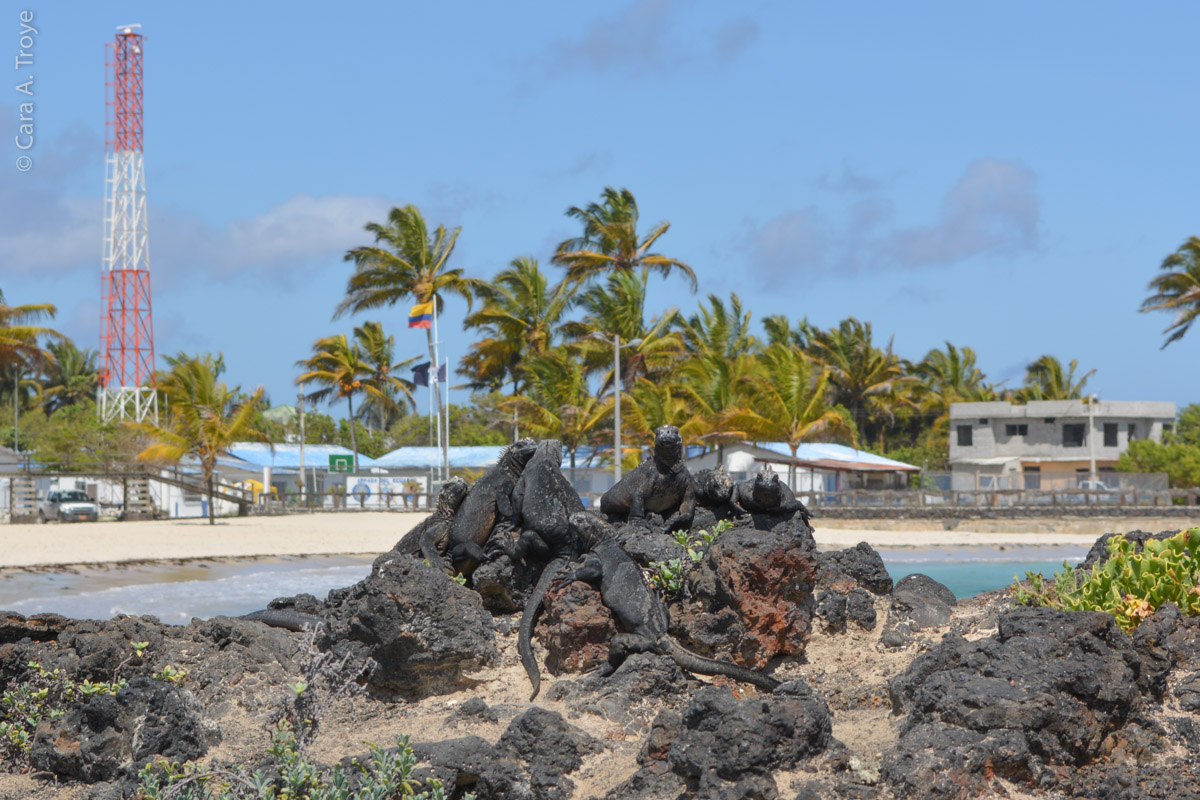
Lounge of Marine Iguanas on the lava rocks on Isabela island (Puerto Villamil in background)
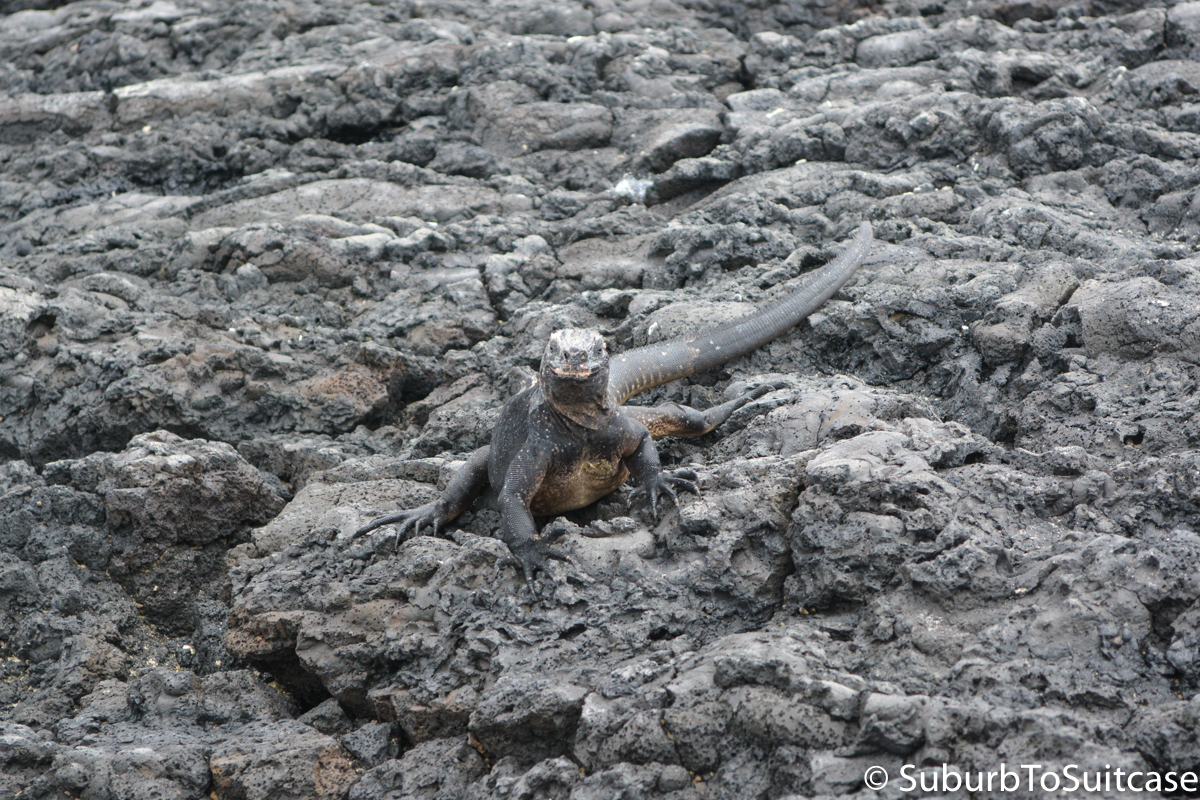
Attentive Marine Iguana on lava rock on Isabela island
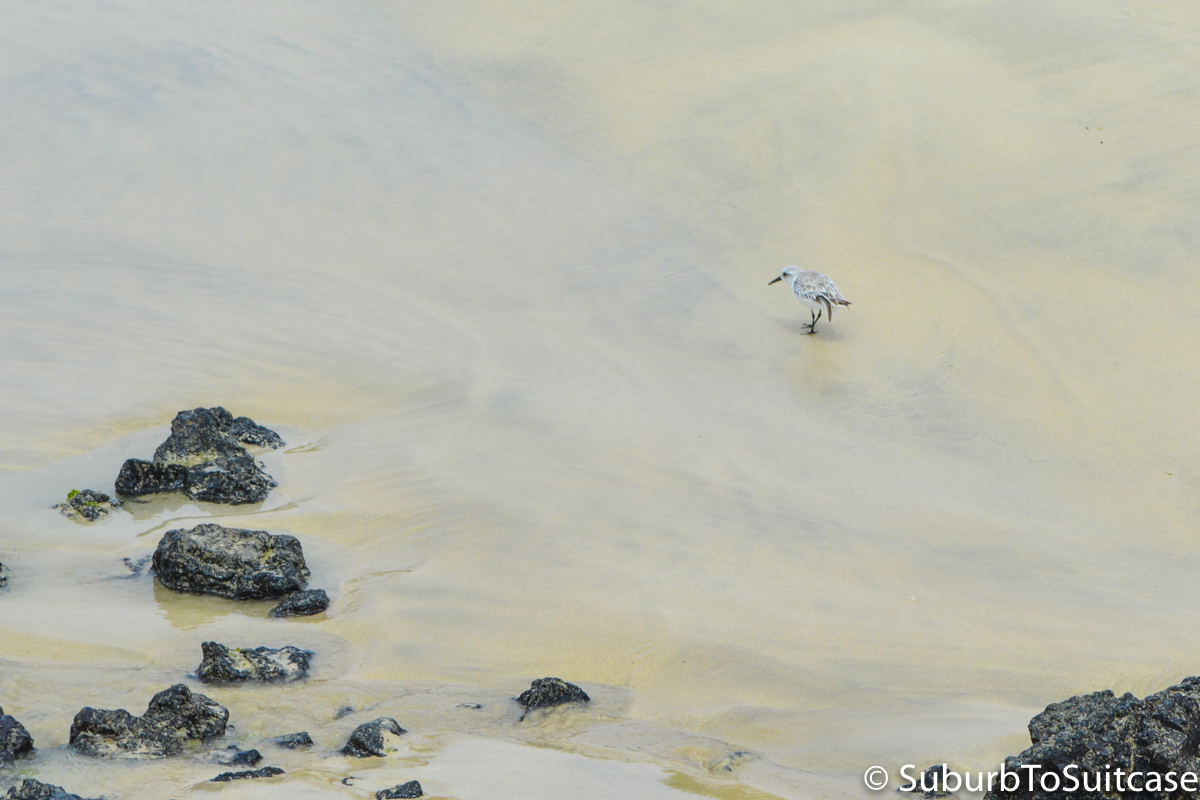
Bird on the white sand beach on Isabela island
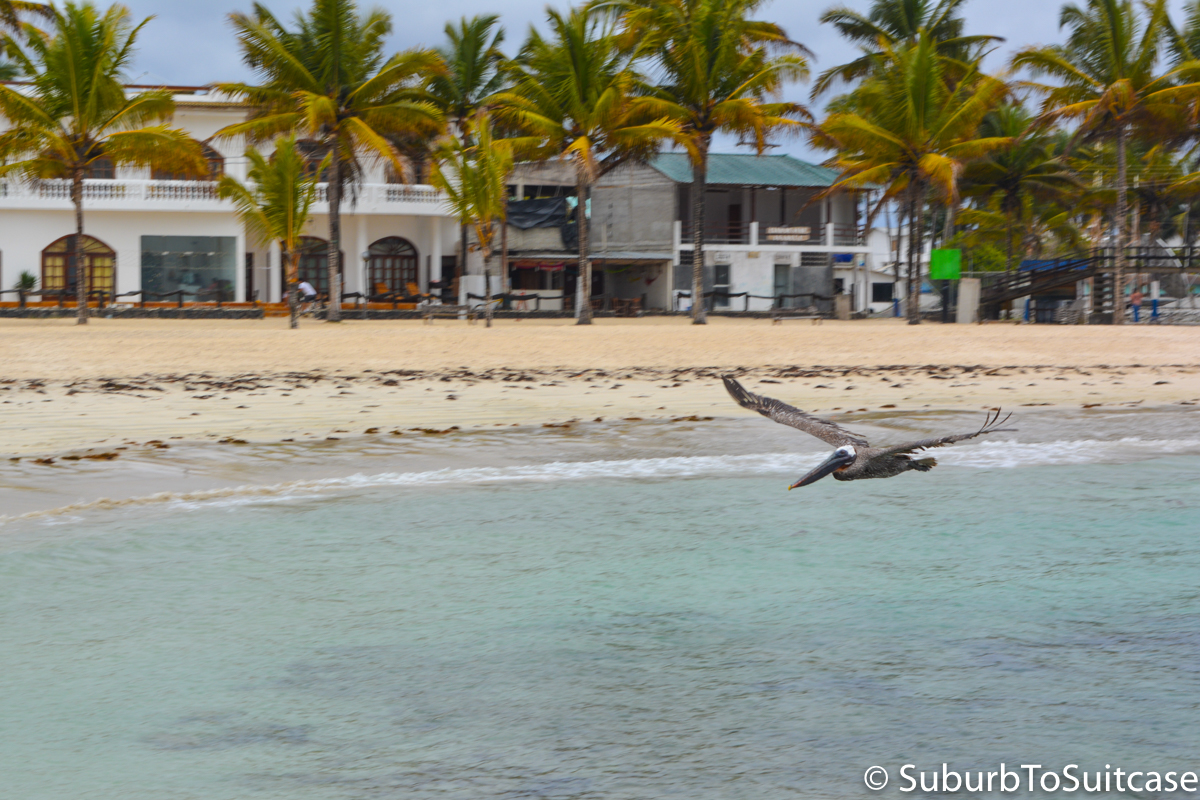
Pelican landing over the bay on Isabela island
The best way to explore this island is on bike and the fee is nominal to rent (well worth it for the exercise and ability to explore on your own without a group or pricey tour). These are not beginner trails though – the paths are through deep loose sand, over rocks and uneven terrain, hilly and often windy. The locals will tell you about the two main paths that diverge at the end of the beach. I explored both, just on different days. One will take you to the tortoise sanctuary and also the crater where you can see the pink flamingos. The other path is the best, though. That is one where you can stop along the trail, park your bike, and venture on foot to clearly marked points of interest (lookouts, lava tunnels, short walks through mangroves to inlets where salt and fresh water merge, and eventually, to the Wall of Tears). Keep in mind that you may be the only person at any of these locations, so bring water/snacks and be sure you plan timing appropriately because if the sun sets, your return will be dark, fast and steep. Be on the lookout for tortoises crossing too. I saw other small animals (rodents) and also something sizeable cross in front of my bike. I could not identify it, but sizing/shape was comparable to a bobcat. On hikes to the inlets, I saw what I believed to be dens for some sort of larger sized animals.
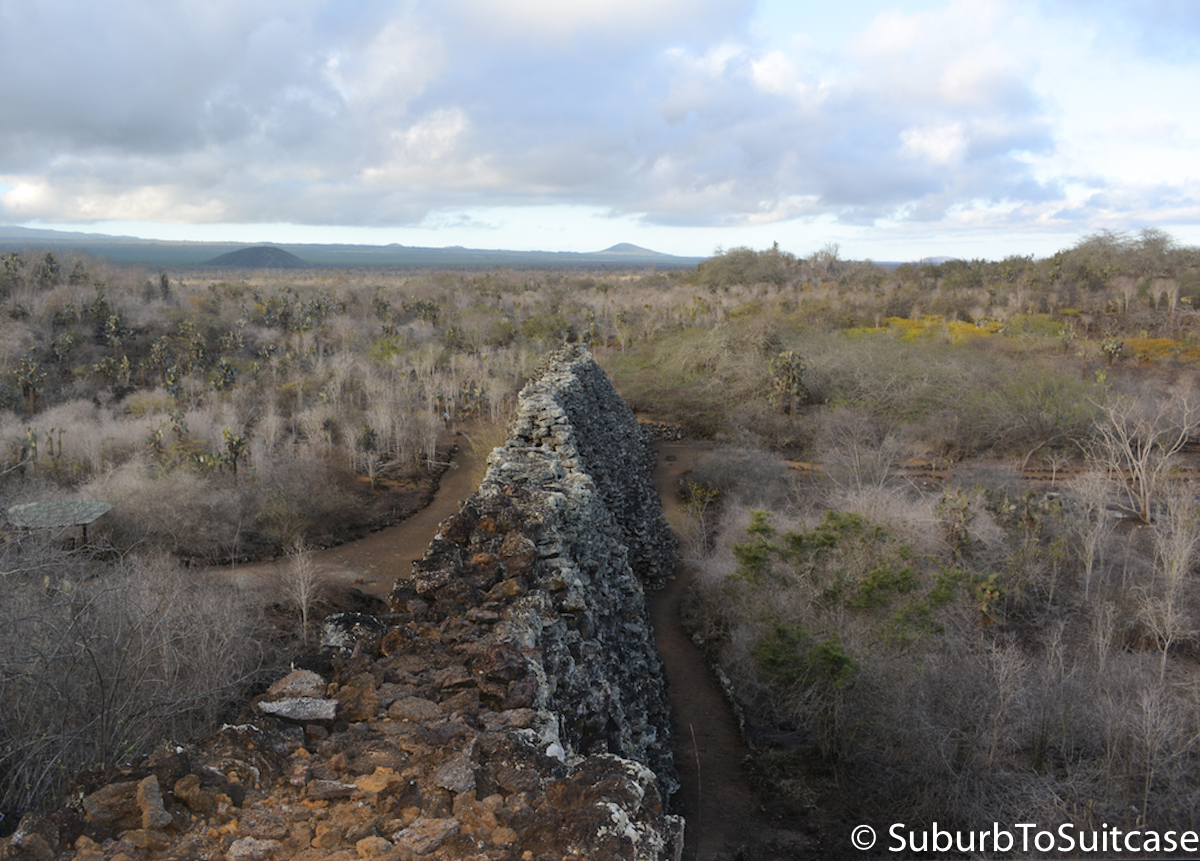
Atop the historic Wall of Tears on Isabela island
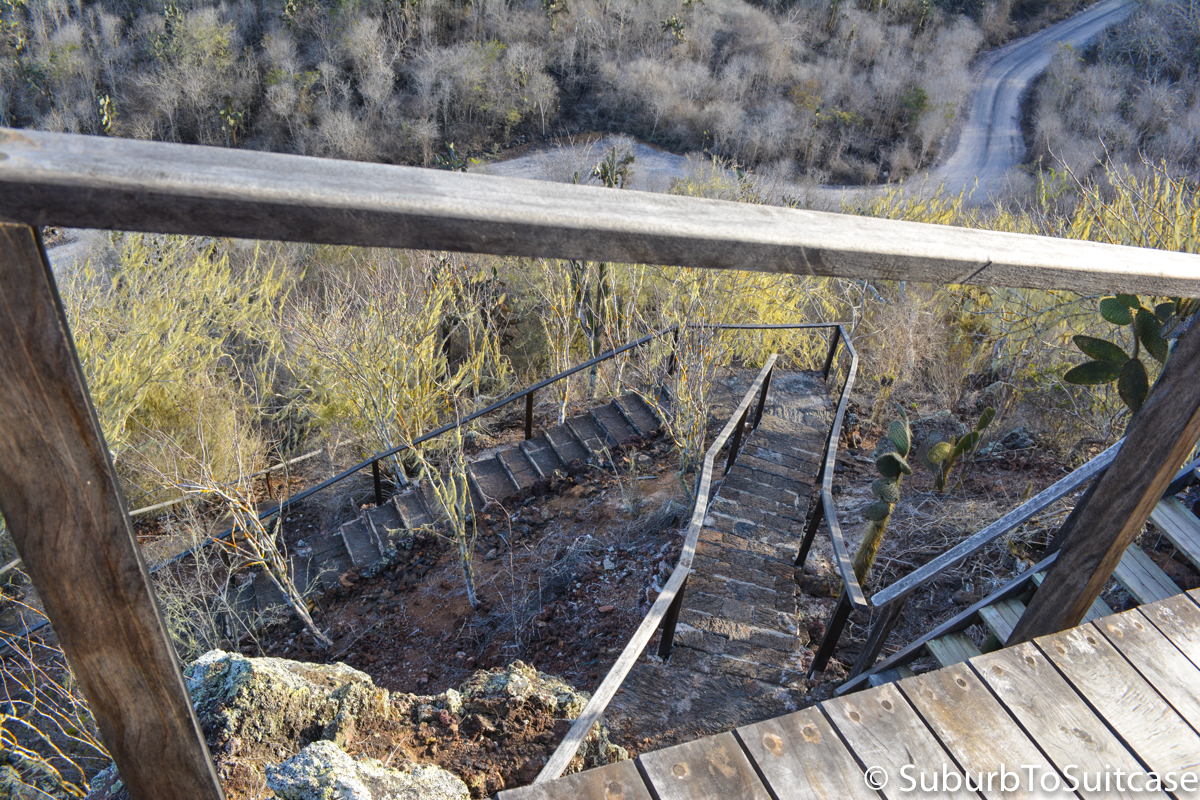
Stairs to the top of El Mirador on Isabela island
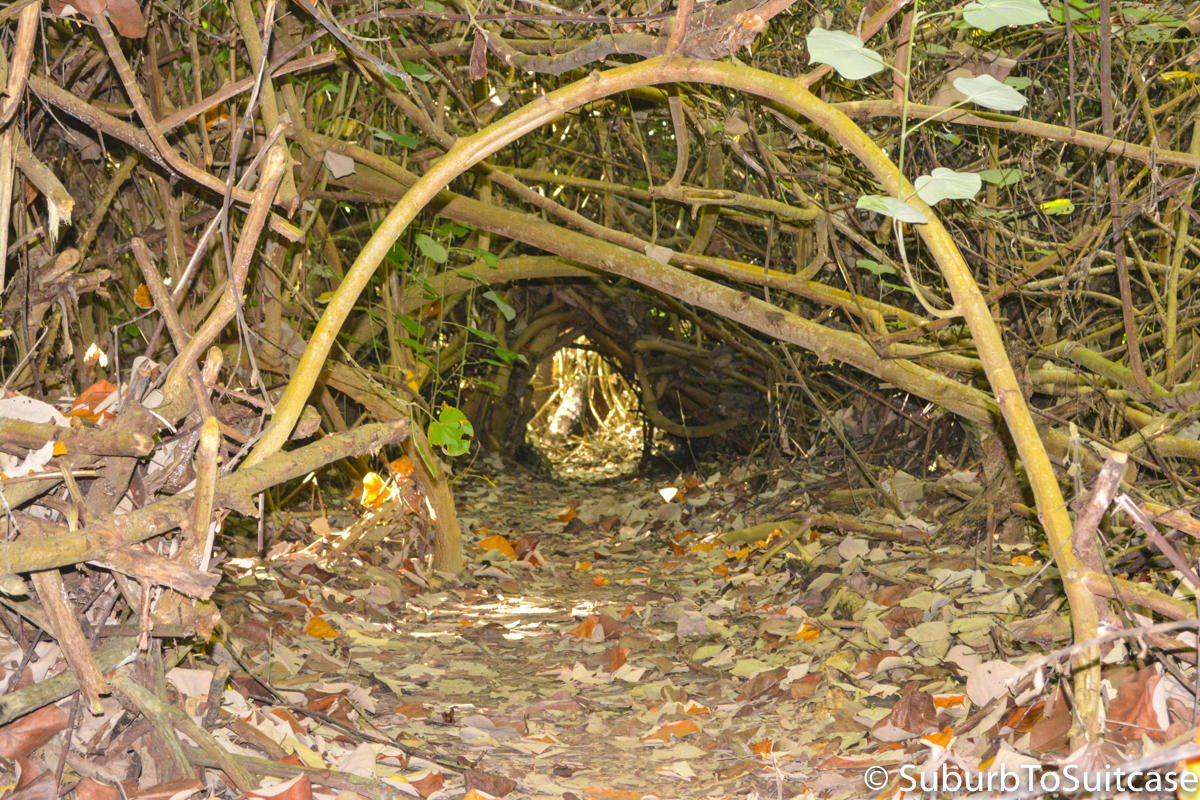
El Estero Path through the low mangrove cover on Isabela island
Isabela has the most beautiful sunsets over the Sierra Negra volcano, so it is worth getting back in time to see from the beach. I met people who did the volcano tour and recommended this. Backpackers would enjoy the bar at the end of the beach – there is volleyball and the general vibe is young and fun.
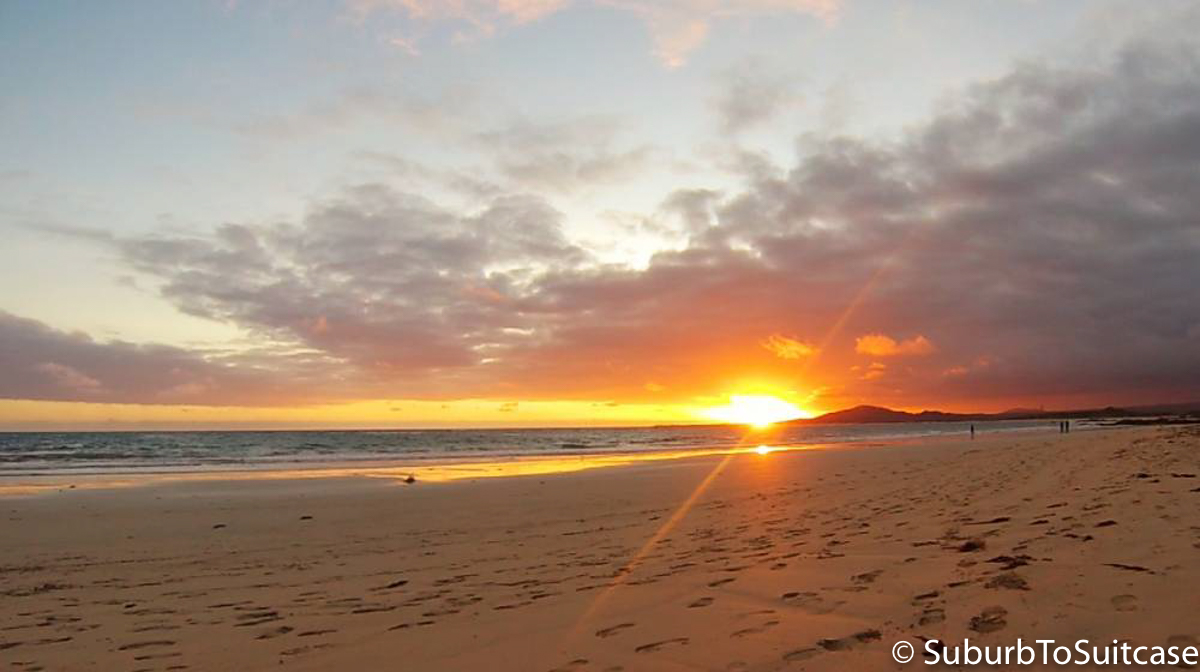
Sunset over the Sierra Negra volcano on Isabela island
The tour to Los Tuneles is worth the price. The place that rents the bikes has the cheapest rate (the tour operator next to the restaurants was $10-$15 USD more expensive). The tour takes you by boat to snorkel two areas (the water was murky and cold when we went, but they provide a shorty wetsuit). Your guide may be able to point out some seahorses and you may spot some rays but there is not much to see other than the rock formations. The best part is actually where they take you to the lava tunnels and allow you to exit the boat and explore the rocks – this alone is worth the price but you will want rugged hiking sandals. This is where you will see the blue-footed booby birds. Keep an eye out for the babies – they are the same size as adults but they have pure white feet at this age and somewhat lighter feathers.
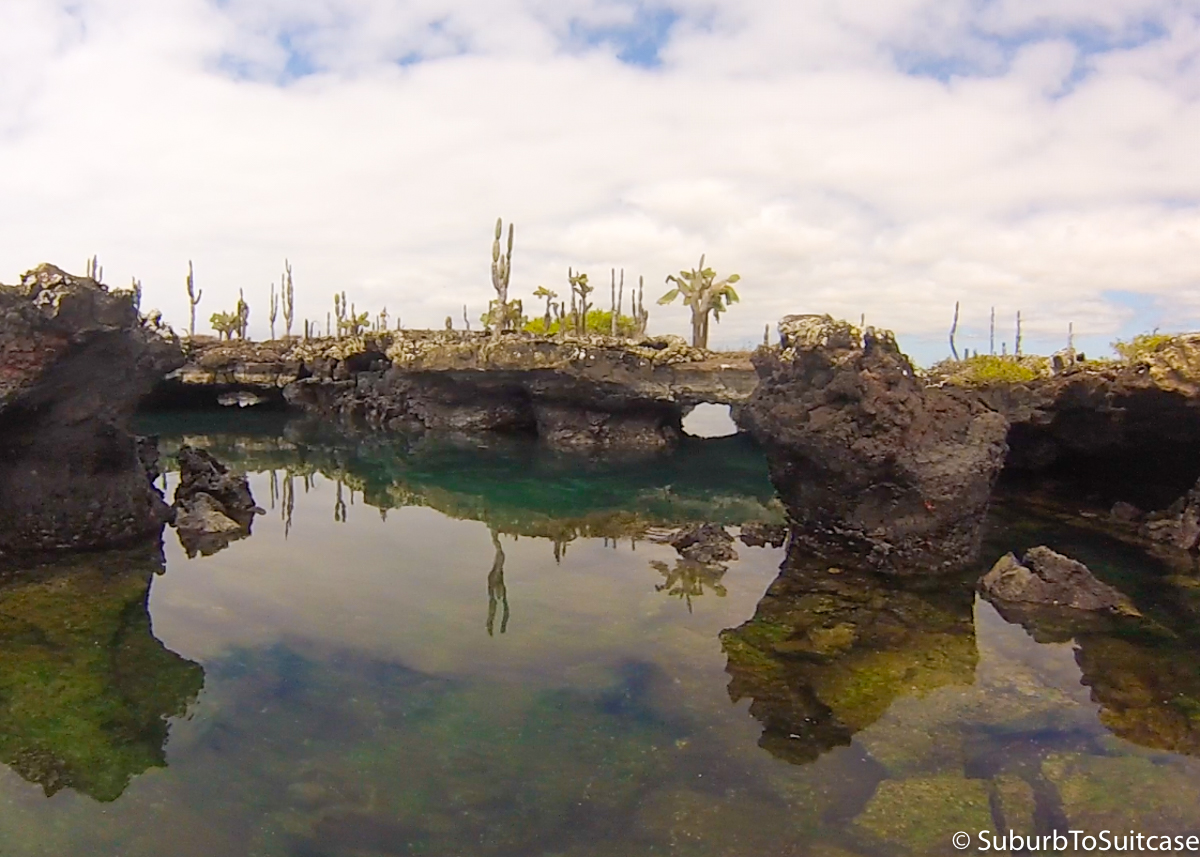
Crystal-clear still water at Los Tuneles lava tunnels off Isabela island
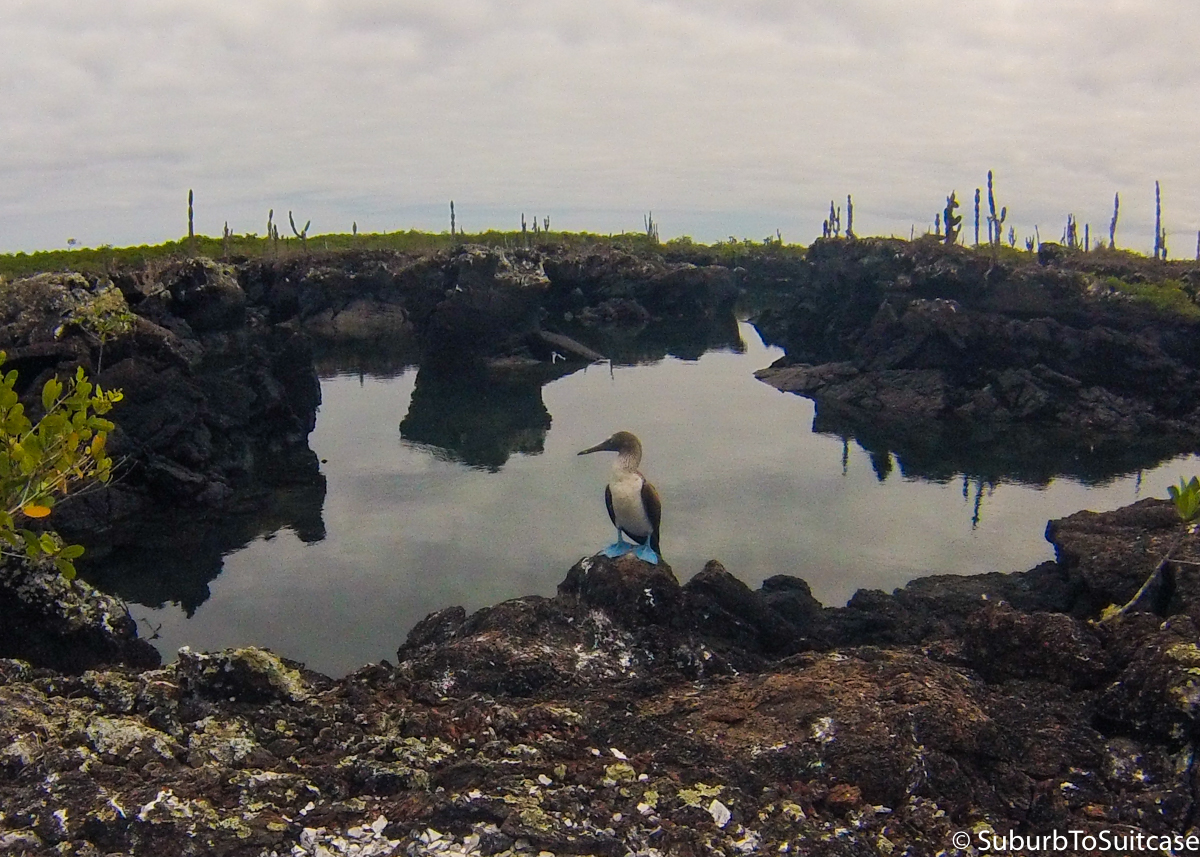
Blue Footed Booby as Los Tuneles
San Cristobal
The ferry from Santa Cruz will take you here but it is another 2-2.5 hour bumpy ride so plan accordingly and get your tickets in advance. This is the surfing island. Backpackers would love it here because of the casual vibe and hostal accommodations right along the malecon. There is really only one place with steady wi-fi on this island and it is the main coffee shop along the malecon. They change passwords every morning and afternoon though, so you have to plan your connectivity when they are not closed for siesta. While they only have a few tables outside, this is a great place to meet other travelers and get recommendations about where to venture for fun.
San Cristobal is also the island to get up close with sea lions. From the moment you arrive, you will also know you are on the sea lion island – you can’t miss the smell. Your nose gets used to it. You can see pups that may be only ~15 inches long as well as huge adults that are up to 600 pounds. There is a great path behind the beach where you can do a steep walk to see a picturesque view. You just have to plan all of this before sunset because once the sun goes down, it gets really dark and since the terrain varies on those hikes, it can be hard to get back if you don’t time things correctly.
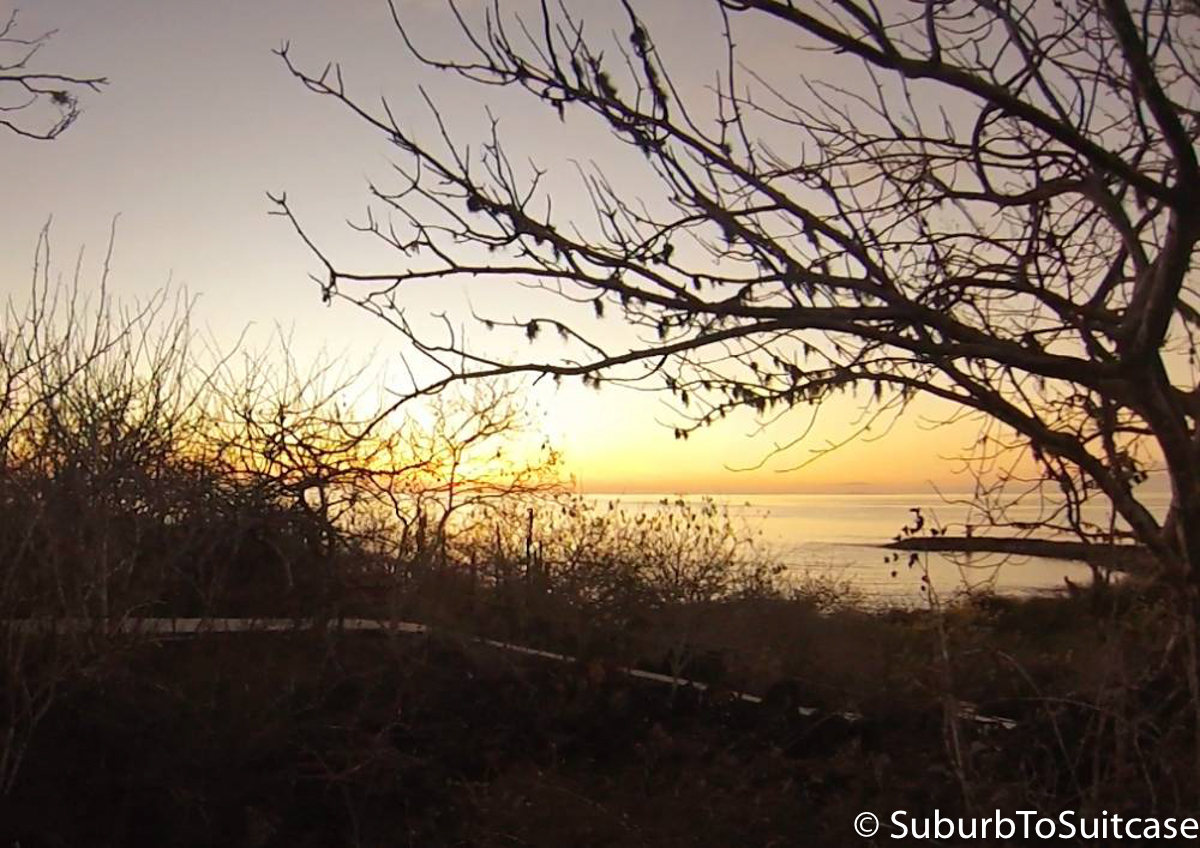
Lagoon Sunset on San Cristobal island
There are places to snorkel here with the sea lions. The main boat tour is to Kicker Rock and while it is probably worth the money, I found plenty to do within walking/hiking distance free of charge. Be sure you find the main bakery on this island too! The place is on a street corner and you will smell it around sunset – delicious pastries, very reasonably priced at ~$1 USD each. It is not uncommon for the Ecuadoran armada to march in the early mornings on this island. It can be unsettling for a unknowing visitor since the chant volume is quite audible.
Travel Tips:
Regardless of the sights you choose to see, must-have items for Galápagos include:
- Refillable water bottle (I use the flat Vapur style)
- All-terrain closed toe shoes
- Rugged closed-toe hiking sandals (not sure what I would have done without my waterproof Keens)
- Dry bag for any boat tours
- Daypack (super handy when you want to bring water, snacks, camera, etc. biking/hiking/kayaking)
- Sunscreen, lip sunblock and hat (do not underestimate the strength of the sun here, regardless of the season)
- Camera and big memory cards (I transferred footage daily to avoid any disappointments with a lost, damaged or stolen item)

National Geographic barge in the harbor at Santa Cruz Island (passed this on the way back from San Cristobal)
